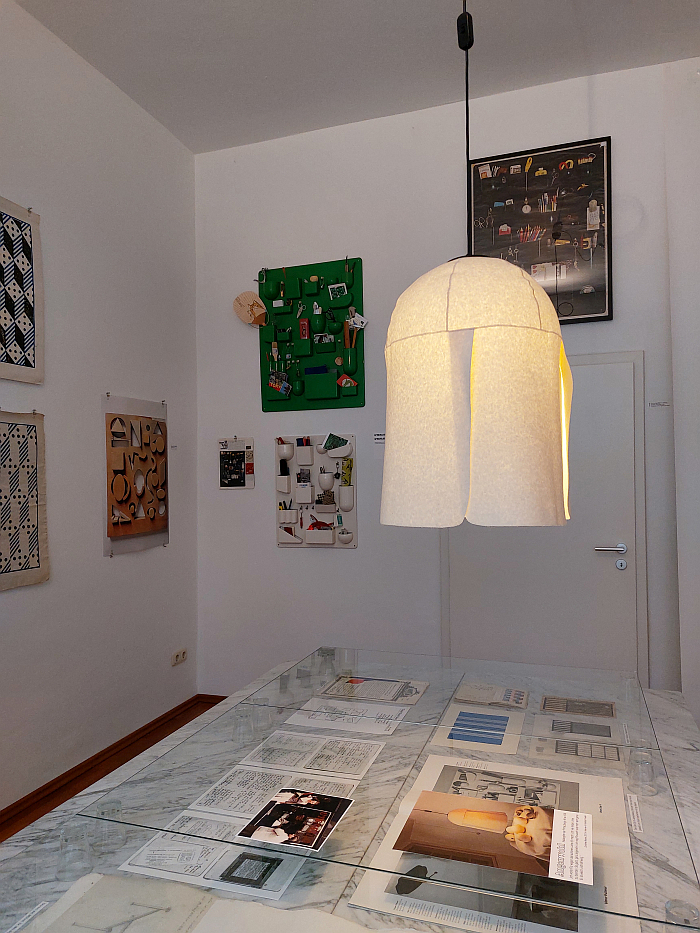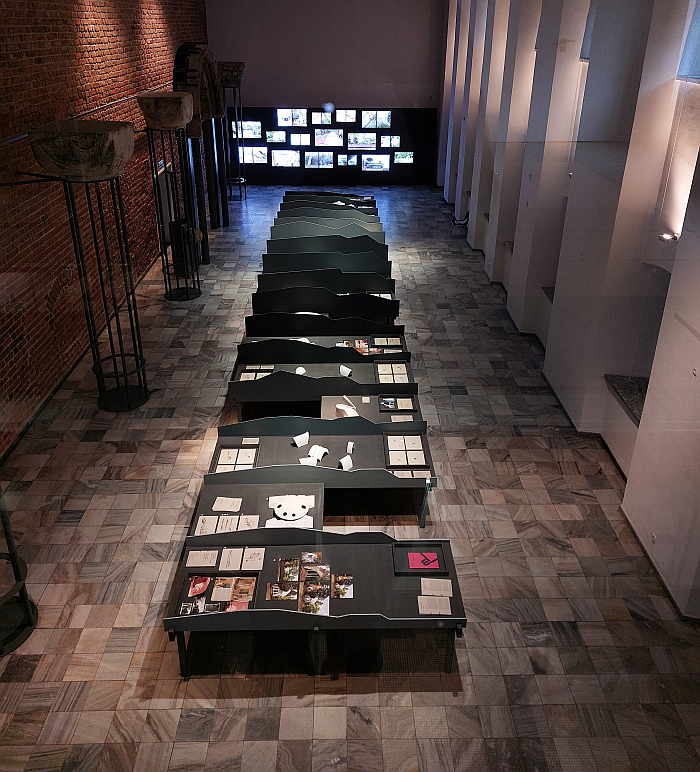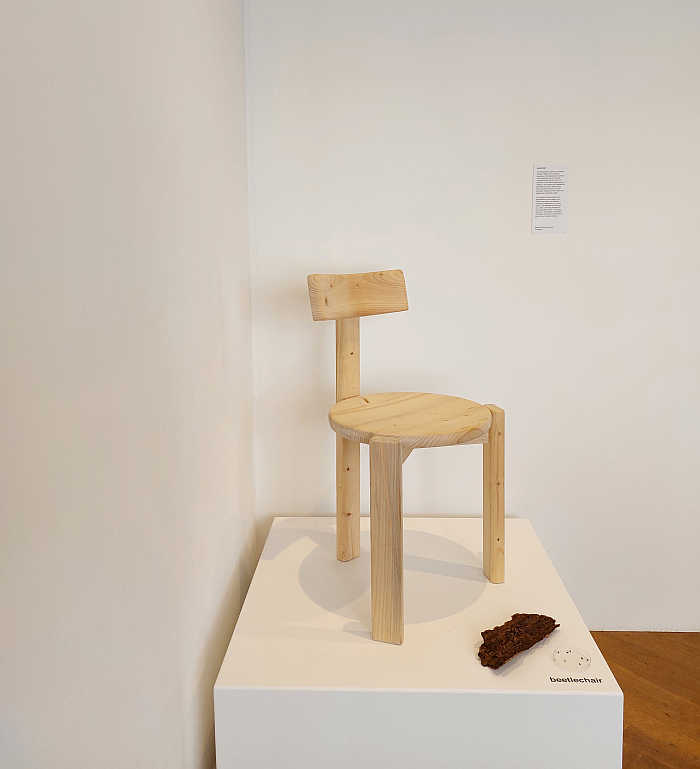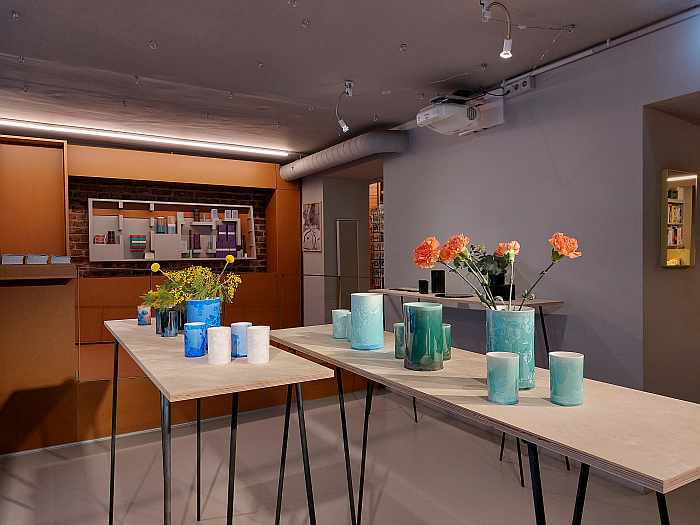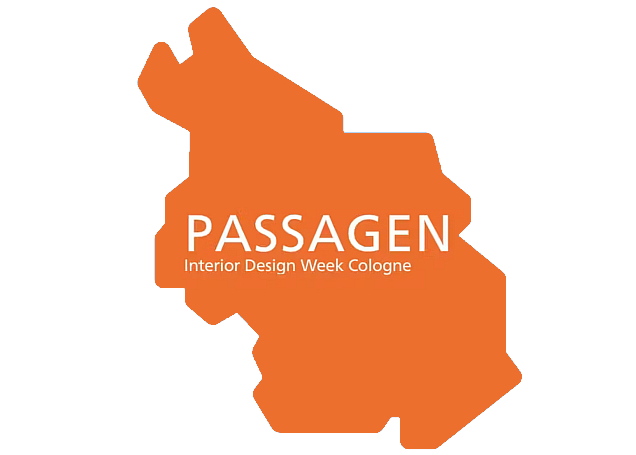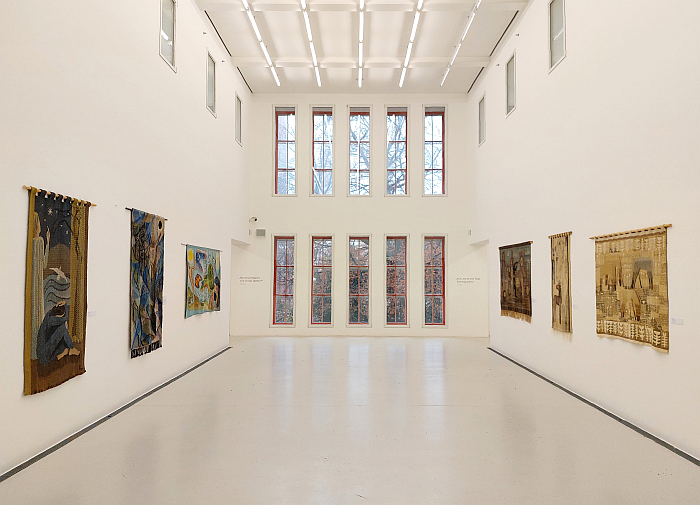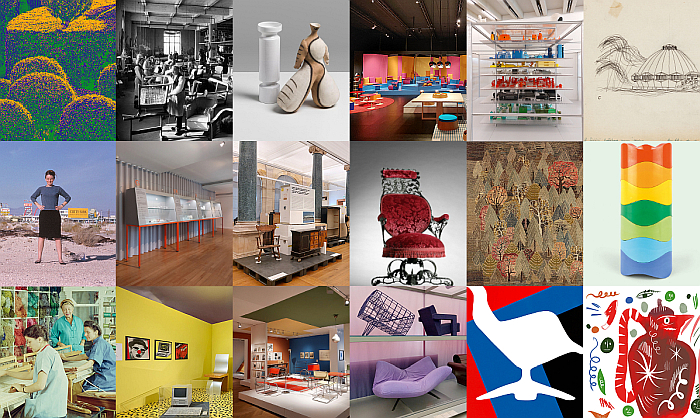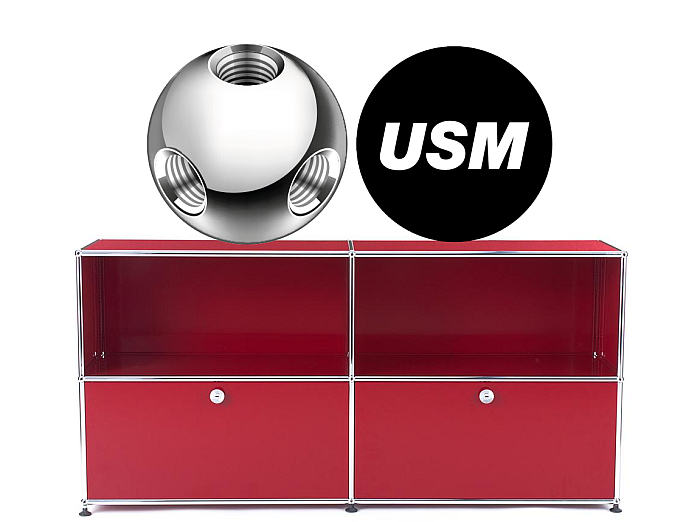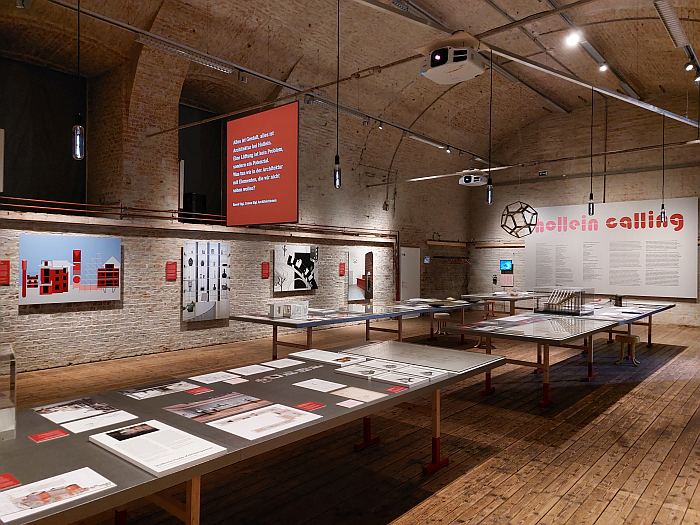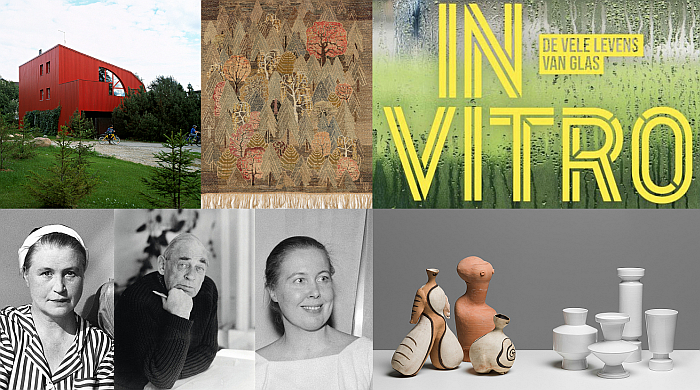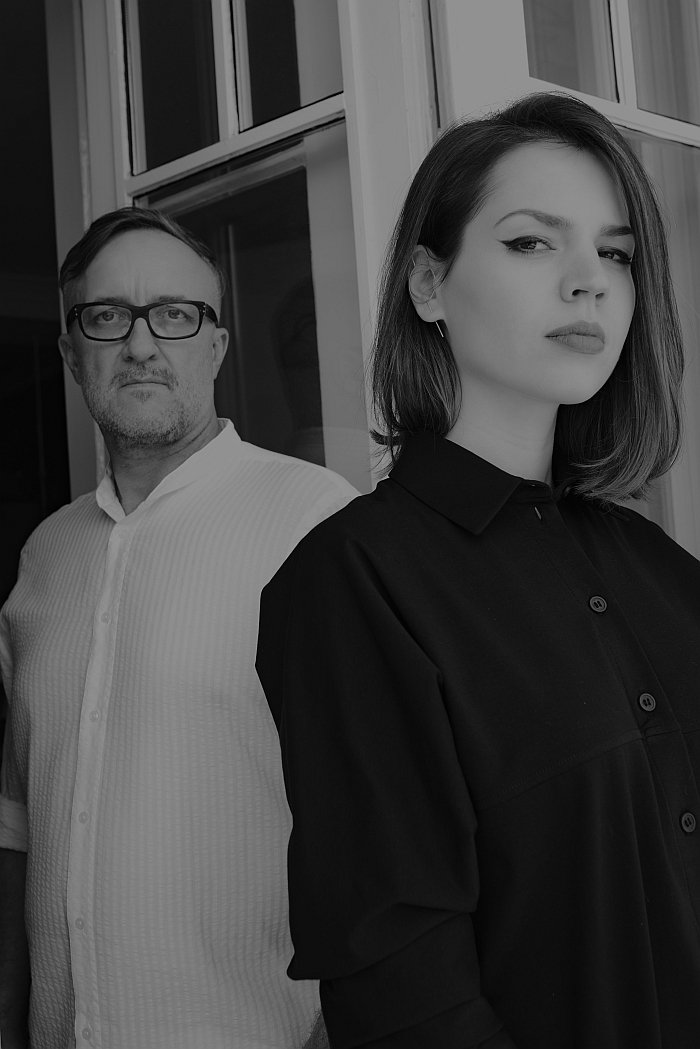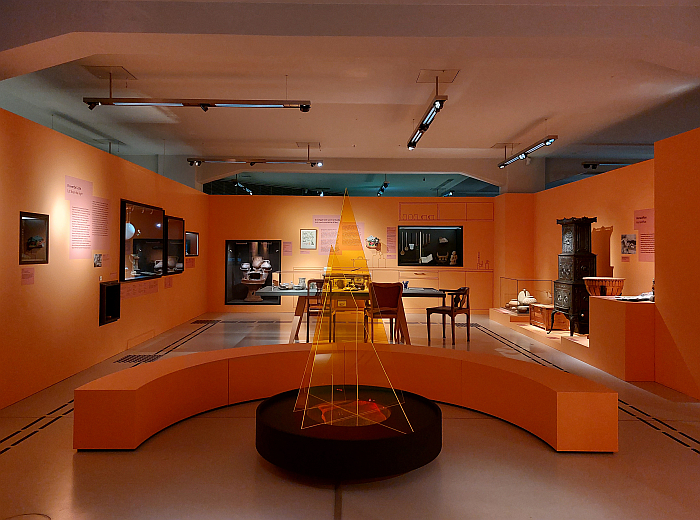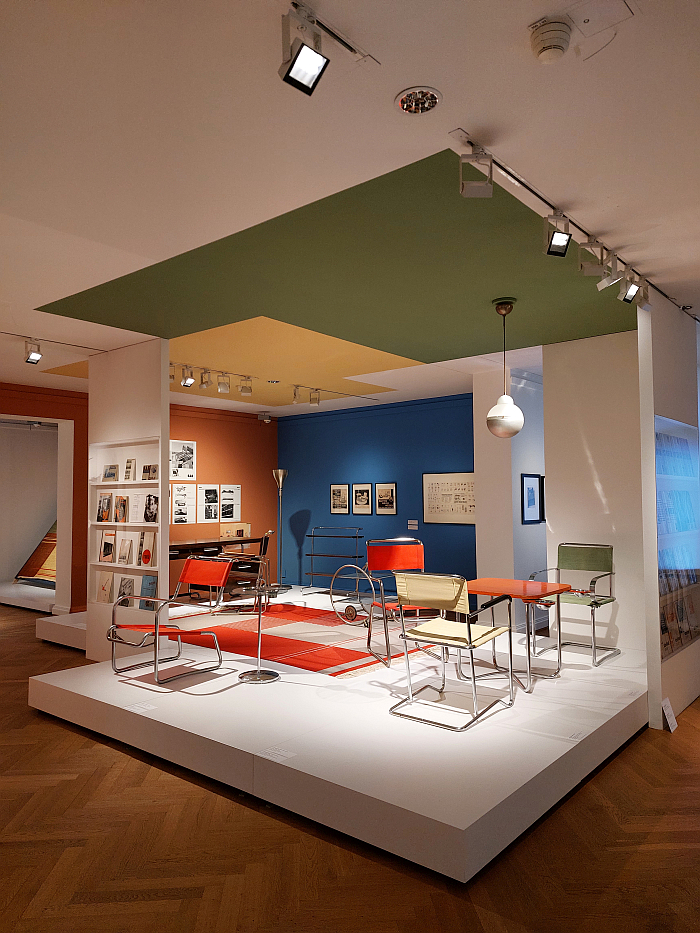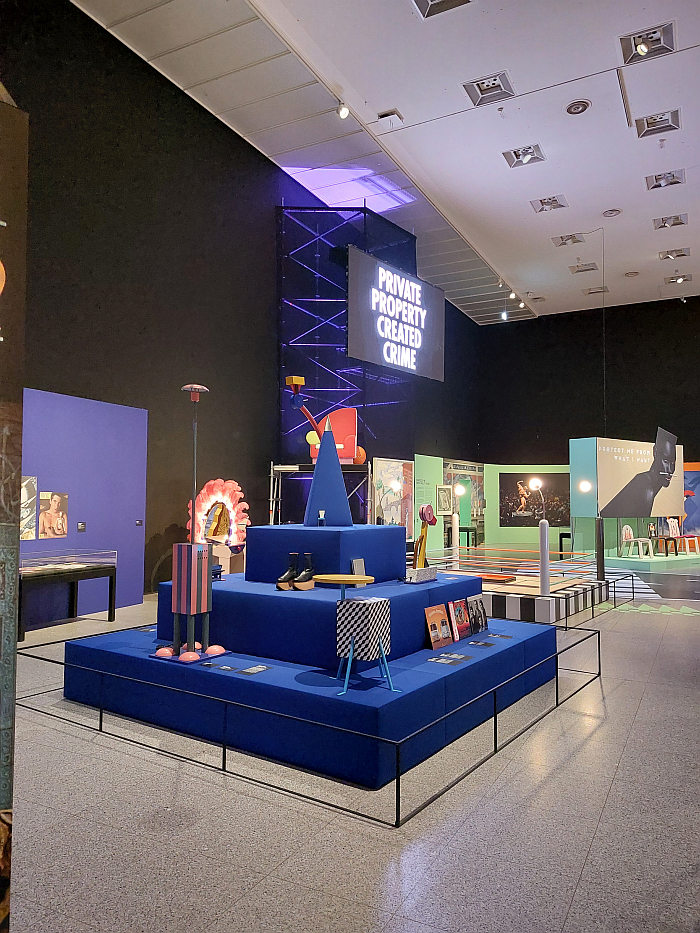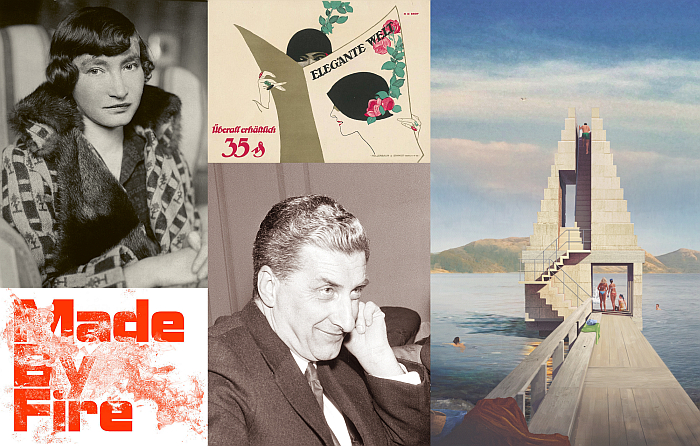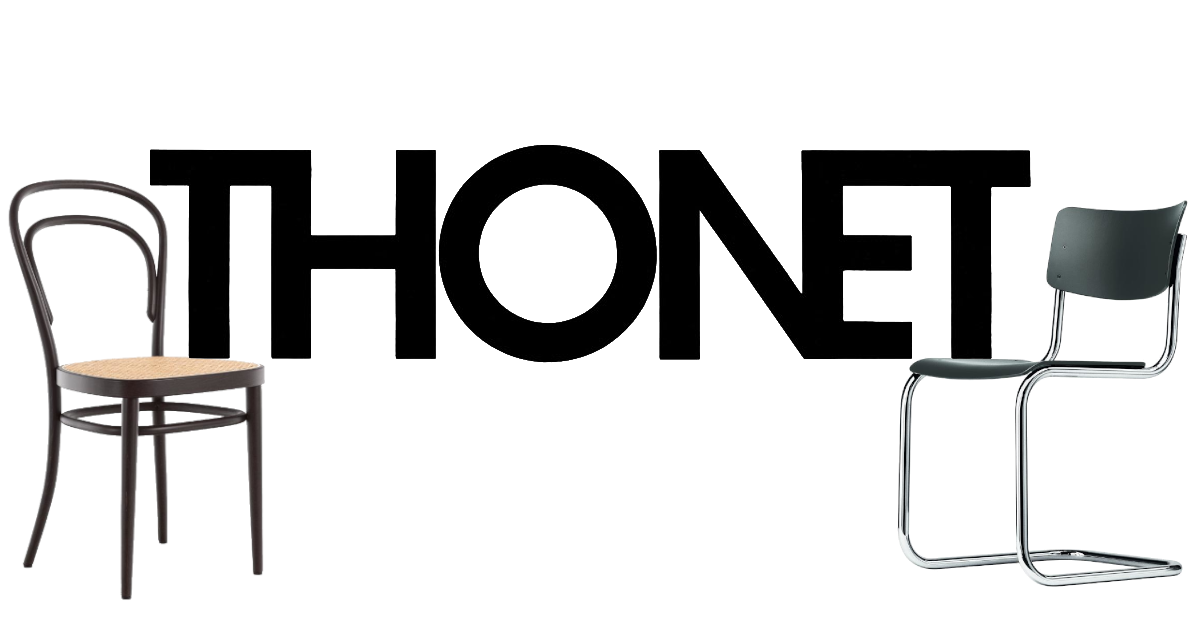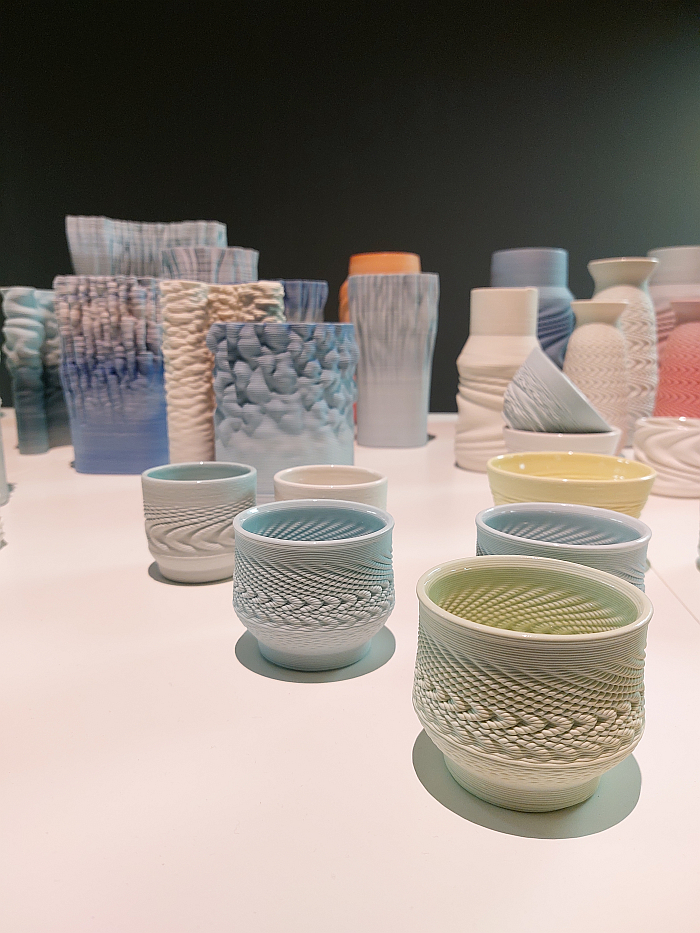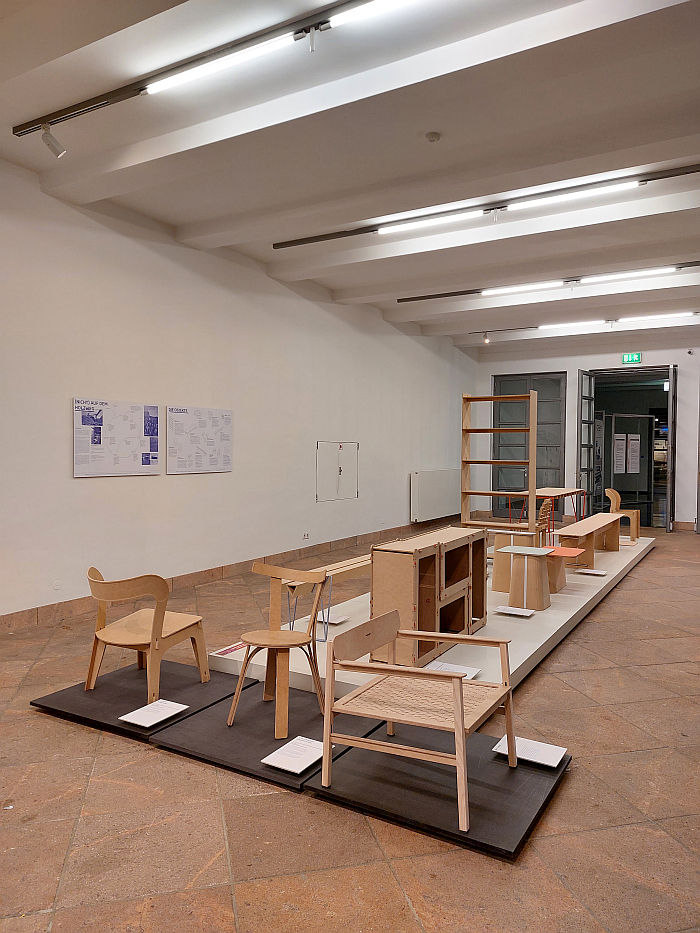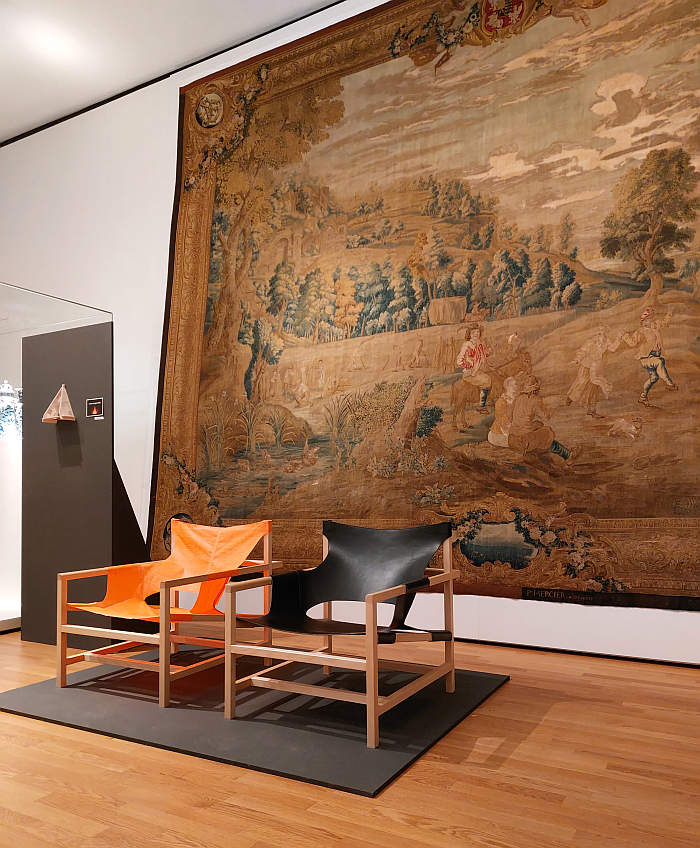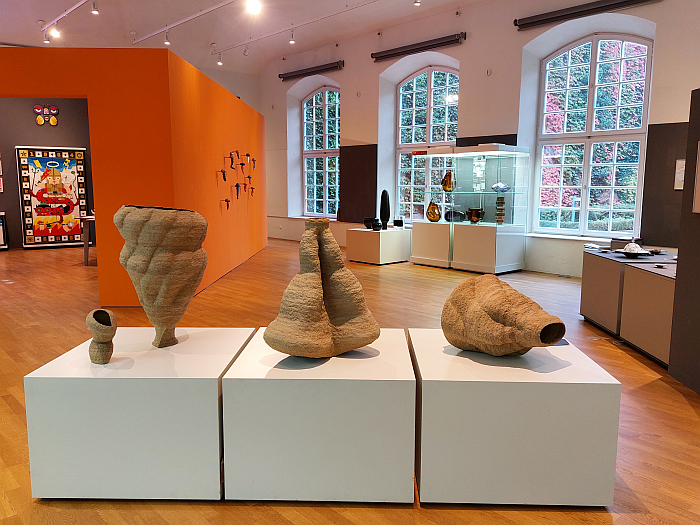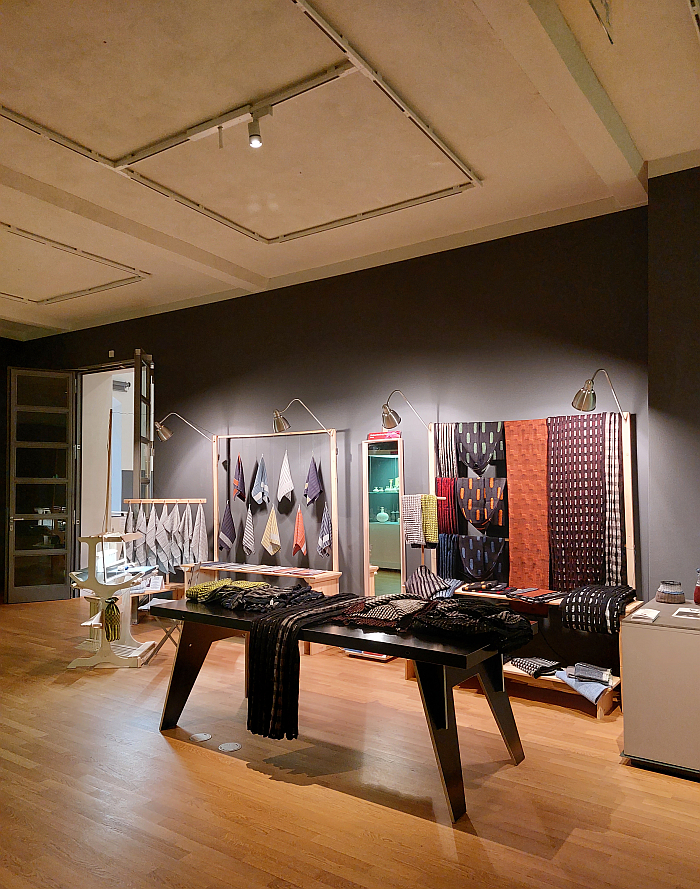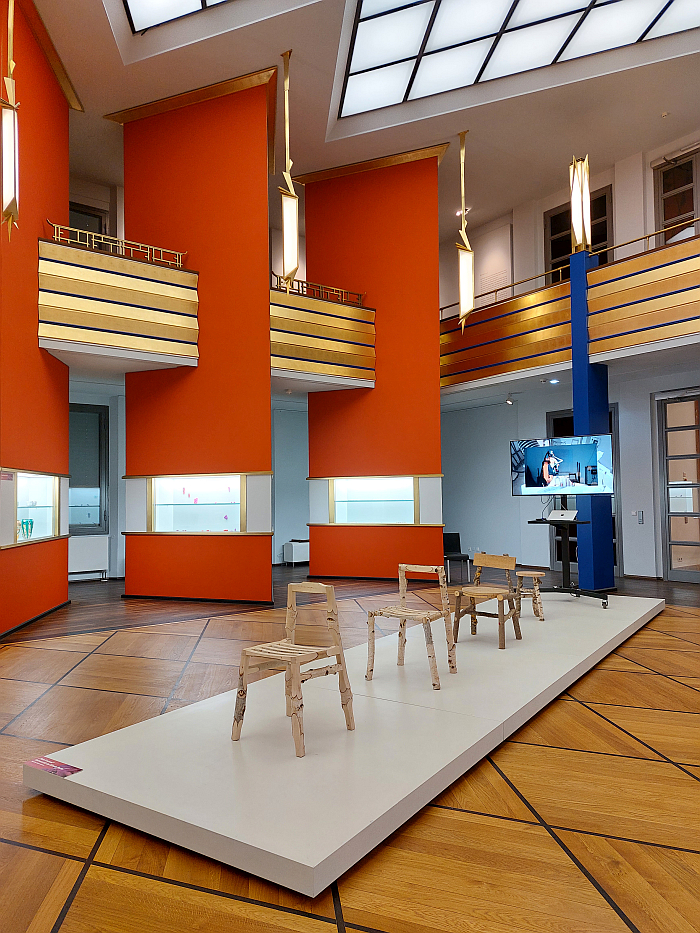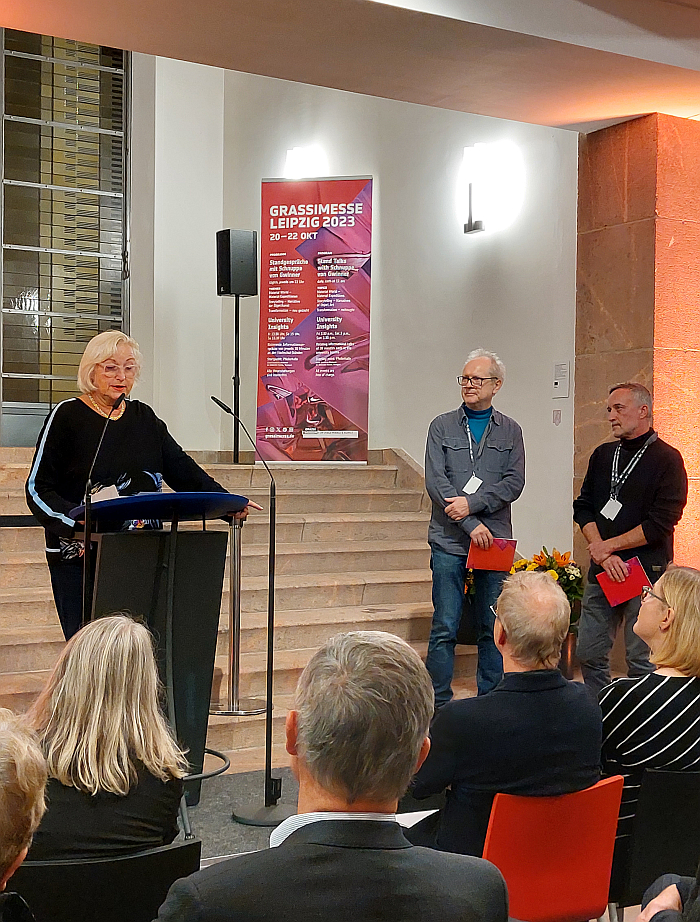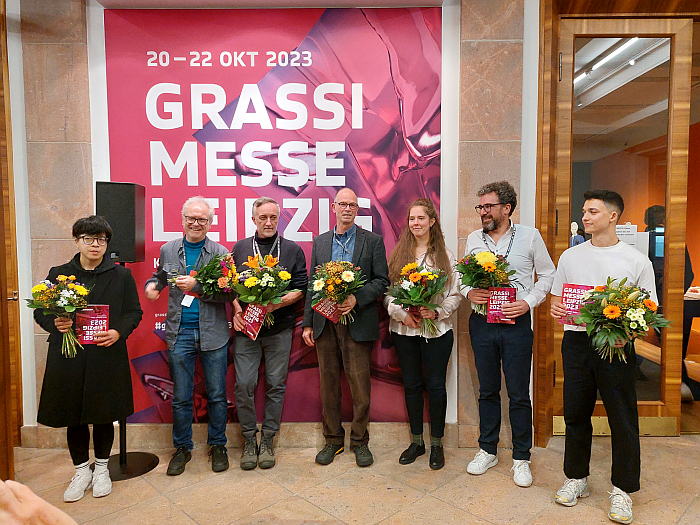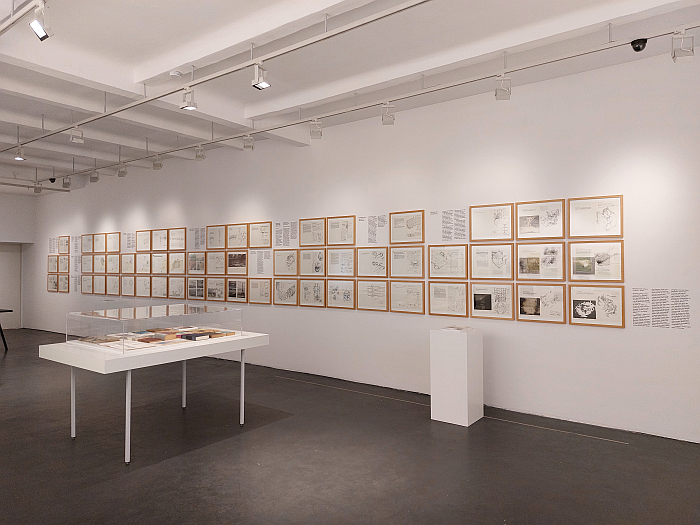Passagen Interior Design Week Cologne 2024: Dorothee Becker – aus dem persönlichen Nachlass
Shape of Dreams. The Architecture of Witold Lipiński at the Muzeum Architektury, Wrocław
“Projektowanie i realizacja form powłokowych jest problemem złożony”, opined the Polish architect Witold Lipiński in 1978, “design and implementation of shell structures is a complex problem”. And it certainly is. For all a complex mathematical problem, and that of a degree that, for Lipiński, for all when combined with the associated technical challenges, “greatly limit[s] plastic ingenuity”, meaning as it did that architects were invariably restricted to forms “mathematically defined in a straightforward manner”, which employed but “the simplest elements of translational and rotational surfaces” and “supports of the least complexity”.
“Nevertheless”, he continued, unperturbed, “by juxtaposing sections of these surfaces and variously shaping the supports, a considerable number of architecture forms are obtained”.1
With the showcase Shape of Dreams. The Architecture of Witold Lipiński the Muzeum Architektury, Wrocław, allow one to appreciate how Witold Lipiński used his appreciations of, his application of, his approach to, his juxtapositions of, geometry to propose new spatial possibilities. And to push the borders of “plastic ingenuity”…….
Passagen Interior Design Week Cologne 2024 – Alaaf!!!
Since 1990 the annual IMM Cologne furniture fair has been accompanied by the Passagen Interior Design Week. A design week, a design festival, that, and although it is often a bit overly commercial for our tastes, also always features a nice mix of emerging and establishing designers, small platforms, design schools, and others removed from the more predictable, superficial, profit-orientated corners of the furniture and design industries. A mix of creatives who help remind what design, what furniture design, is and can be. Should be. A mix of creatives not necessarily all good, that would be too much to expect, but who as a general rule are all well worth spending time with. An international mix of creatives if, more often than not, with a strong focus on Cologne, Düsseldorf and the general Rhein and Ruhr valleys. Which is in no way a complaint, it is after all their local event.
And a design week that over a great many years, along with IMM Cologne, marked the start of our year, was a permanent, unyielding, date in our calenders. Trips to the Rhein which over the years have produced innumerable abiding memories, both fondly recalled and much, much, less so. And trips to the Rhein from which we always returned wiser. Both from the positive and the negative experiences.
Then, invariably, came Covid and not only Passagen and IMM became much more complicated places to visit, but Cologne.
2024 we’re back. Or at least are back at Passagen, we’re still wrestling with the question of whether to return to large, international fairs such as IMM; still wrestling with questions of the necessity and justification and sustainability and meaningfulness of large, international fairs such as IMM. But that is no reason to ignore the design weeks that accompany them.
Thus in the coming days we will bring you some of our thoughts and reflections on some of the showcases visited in context of Passagen Interior Design Week 2024.
Thoughts and reflections on some of the design and designers encountered in the ancient, meandering, Passagen of Kölle.
Alaaf!!!
Else Mögelin. Ich wollte, gegen alle Hindernisse, weben at the Brandenburgisches Landesmuseum für moderne Kunst, Dieselkraftwerk, Cottbus
“Why are you studying in the pottery?”, enquired Paul Klee of Else Mögelin in 1921 after seeing her paintings of the village of Dornburg, home of the original Bauhaus Weimar pottery workshop, “these watercolours look as if they are designs for tapestries”.
With Else Mögelin. Ich wollte, gegen alle Hindernisse, weben the Brandenburgisches Landesmuseum für moderne Kunst, Cottbus, explain and explore what happened next, and thereby help introduce an interesting and informative, if all too popularly anonymous, 20th century creative…….
5 New Architecture & Design Exhibitions for January 2024
Time was when new architecture and design exhibitions opened every month. Some months more. Some months less. But every month enough for a list.
Time was.
But time is.
And today you’ll struggle to find new showcases opening in August and January. If that’s a collective decision made by the global museum community, or pure chance, we no know. We can but observe it’s existence as an actual thing.
Or put another way: we can find, globally, but one, as in 1, new exhibition due to open in January 2024; and 1, famously, can’t be the basis for a list.
Thus, and as with August 2023, January 2023, and August 2022, in place of recommendations for new exhibitions opening, we bring you a list of all those architecture and design exhibition currently running that you can view in January 2024. And do so with the recommendation that you view as many as possible. Because from February onwards the number of new openings increases greatly, and you may struggle to keep up…….
Hollein Calling. Architectural Dialogues at the Architekturzentrum Wien
“So revolutionary his ideas”, opined the Austrian state broadcaster ORF in 1969 of architect Hans Hollein, “when he enunciates them they sound like the cosy, cordial habitiere of ages past. His ‘schauen se‘ and ‘eeeeeh‘ conjure up Fiaker, the chatter and gossip on Graben, the Riesenrad, memories of alt-Wien“.1
With Hollein Calling. Architectural Dialogues the Architekturzentrum Wien invite one to explore in more detail the vocabulary and articulation of Hans Hollein…….
5 New Architecture & Design Exhibitions for December 2023
According to Germanic folklore, “If December is wild with rain, then leave your fields and get thee to an architecture or design museum”
Our five locations for escaping the rains of December 2023 can be found in Cottbus, Rome, Maastricht, Tallinn and Zürich…….
smow Blog Interview: Line and Round – It is a bit of a mission impossible to try to make a career as a furniture designer in Hungary
Line and Round, I O, was established in Budapest in 2017 by Annabella Hevesi, a Masters graduate from the Moholy-Nagy University of Art and Design and Gábor Bella, a Masters graduate from the “School of Life”, with a background in carpentry and numerous years experience in a variety of construction/interior/design fields, including the creation, development and realisation of escape room games, a concept that enjoys a particular popularity in Hungary, and in which context Annabella and Gábor met and began their professional cooperation.
A cooperation that in the six years since it has been staged as Line and Round has seen Annabella and Gábor develop and realise a variety of interior and furniture design projects including, for example, the creation of a locker room and press conference space for the Sopron Basket basketball team, numerous hotel and private interior projects, and the Burnt Geometry collection, Line and Round’s first self-initiated furniture collection, and part of that presentation at the 2023 Grassimesse, Leipzig, that saw Line and Round win the inaugural smow-Designpreis, or more accurately co-win the inaugural smow-Designpreis alongside Nürnberg based glassmaker Cornelius Réer.
Following their success in Leipzig we caught up Annabella and Gábor, virtually, online, to chat about their work, approaches and the realities of life as designers in the contemporary Hungary, but began by asking how Line and Round came to be, how Line and Round liberated itself from the escape room game industry…….
Home Sweet Home. The Archaeology of Domestic Life at SMAC – Staatliches Museum für Archäologie Chemnitz
In 1930 the Danish designer and educator Kaare Klint opined that in terms of furniture and furnishings, “Problemerne er ikke saa nye, de er i mange Tilfælde løst før“, “the problems are not so new, they have in many cases been solved before”.1
With the exhibition Home Sweet Home. The Archaeology of Domestic Life, SMAC – Staatliches Museum für Archäologie Chemnitz, test that theory to extreme levels, and also expand it beyond furniture and furnishings to all aspects of domestic arrangements and domesticity over the past 30,000 years…….
Hej rup! The Czech Avant-Garde at the Bröhan Museum, Berlin
There is an argument to be made that popular understandings of, and the popular presentation of, inter-War European avant-garde architecture and design tend to focus on Germany and Russia, and on Functionalism, popular foci that tend to cause us all to forget that the inter-War European avant-Garde was a homogenous mix of positions and, and as with the Art Nouveau before it, an international moment defined by its variety of regional dialects.
With the exhibition Hej rup! The Czech Avant-Garde the Bröhan Museum, Berlin, provide for an introductory course in inter-War Czechoslovakian…….
Everything at Once: Postmodernity, 1967–1992 at the Bundeskunsthalle, Bonn
Postmodernism
¯\_(ツ)_/¯
With the exhibition Everything at Once: Postmodernity, 1967–1992 the Bundeskunsthalle, Bonn, request a more considered response…….
5 New Architecture & Design Exhibitions for November 2023
Back in the spring Haitian musician Wyclef Jean informed us all he’d be “Gone Till November”.
And so he should be back any day now; and given how busy he’s invariably been all summer, earning as he has been enough money to buy out blocks, he’s probably not had a chance to visit an architecture or design museum. And so, we assume, will be absolutely desperate to stimulate his cognitive faculties.
Our five recommendations for new exhibitions opening in November 2023 for Wyclef Jean, or indeed for anyone seeking to achieve fresh perspectives on architecture, design and the world around us, can be found in Vienna, Oslo, Brno, Krefeld and Ljubljana…….
Grassimesse 2023 Compact: Burg Giebichenstein Kunsthochschule Halle – Faserland oder 8mm und 100% Bio
Grassimesse 2023: smow-Designpreis Co-Winners – Annabella Hevesi / Line and Round IO & Cornelius Réer
Let’s be honest, it wouldn’t be smow if it followed the rules and did that which you’d expected it to.
Thus it should have come as absolutely no surprise to anyone that the inaugural Grassimesse smow-Designpreis produced not the expected one, but two, joint, co-winners: Budapest based designer Annabella Hevesi and her studio Line and Round I O and Nürnberg based glassmaker Cornelius Réer…….
Grassimesse 2023: Grassipreis Winners
While in many regards being selected to participate at the Grassimesse can be considered an accolade in itself, the event also awards a number of prizes: some specific, others general, all well worth winning.
Ahead of the opening of the 2023 edition the winners of the seven Grassi Prizes were announced on Thursday evening in the Grassi Museum für Angewandte Kunst, Leipzig.
Selected by the 2023 Grassmesse jury from the 80+ exhibitors, the victorious seven are…….
The Tube. An Architecture for Conceivable Times at the Werkbundarchiv – Museum der Dinge, Berlin
“If we want to survive, if we want to reach the next level”, postulated the German architect Günther L. Eckert in 1980, “we simply have to risk the impossible. It is too easy to invest only in common logic and to dismiss everything that does not have these specific characteristics, everything that encroaches into the incorruptible dimensions of creative self-consent”.1
Günther L. Eckert’s “impossible”, his distancing from “common logic”, his encroaching “into the incorruptible dimensions of creative self-consent”, was the so-called Kontinuum, Continuum, a 250 metre diameter tube which formed a complete, unbroken, circle around the globe, constituted a Kontinuum around the globe, and in which all humanity was to live.
With the exhibition The Tube. An Architecture for Conceivable Times, the Werkbundarchiv – Museum der Dinge, Berlin, introduce Eckert’s Kontinuum and thereby allow space for reflections on not only architecture and the built environments we create for ourselves, and the whys and wherefores of those environments, but also on the possibilities for the future of both human societies and the natural environment on which we all depend.
And an exhibition on a Kontinuum that is also the last Werkbundarchiv – Museum der Dinge exhibition in their long-time home in Berlin-Kreuzberg, marks the end of their continuance in Berlin-Kreuzberg, before their imminent, involuntary, investor enforced relocation…….
